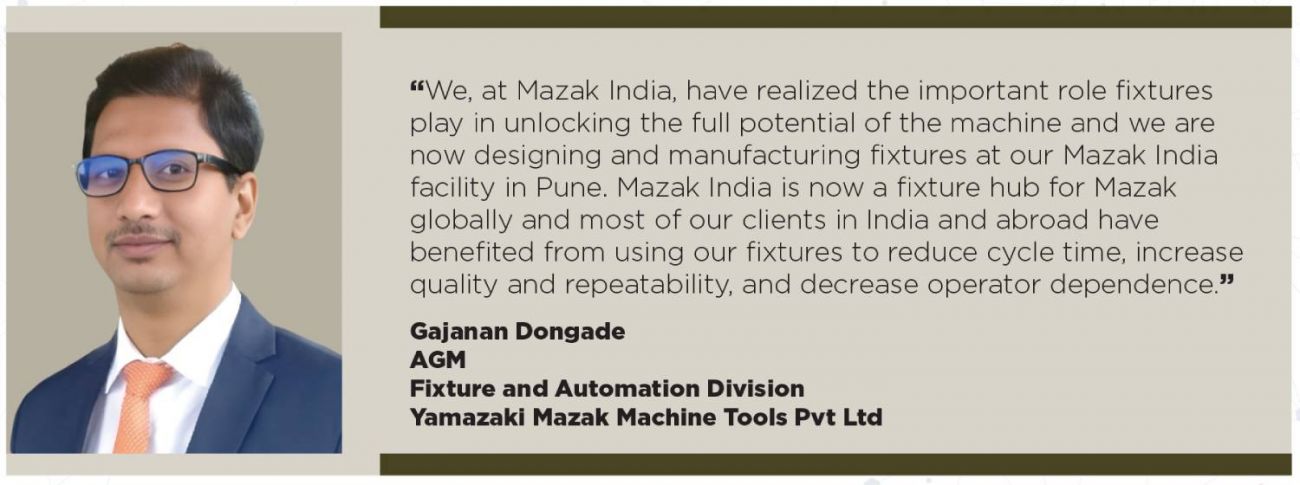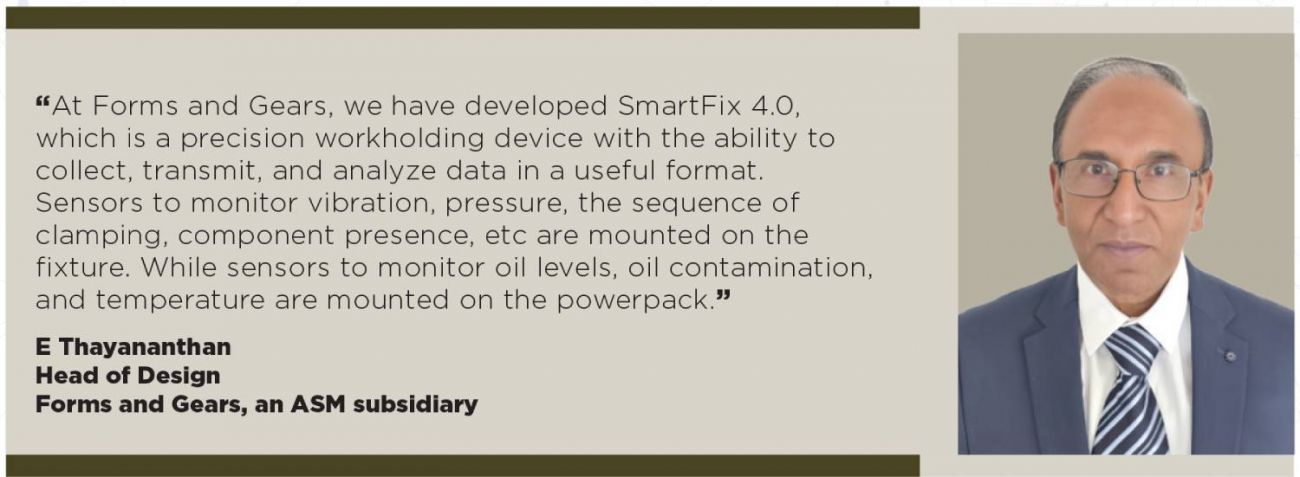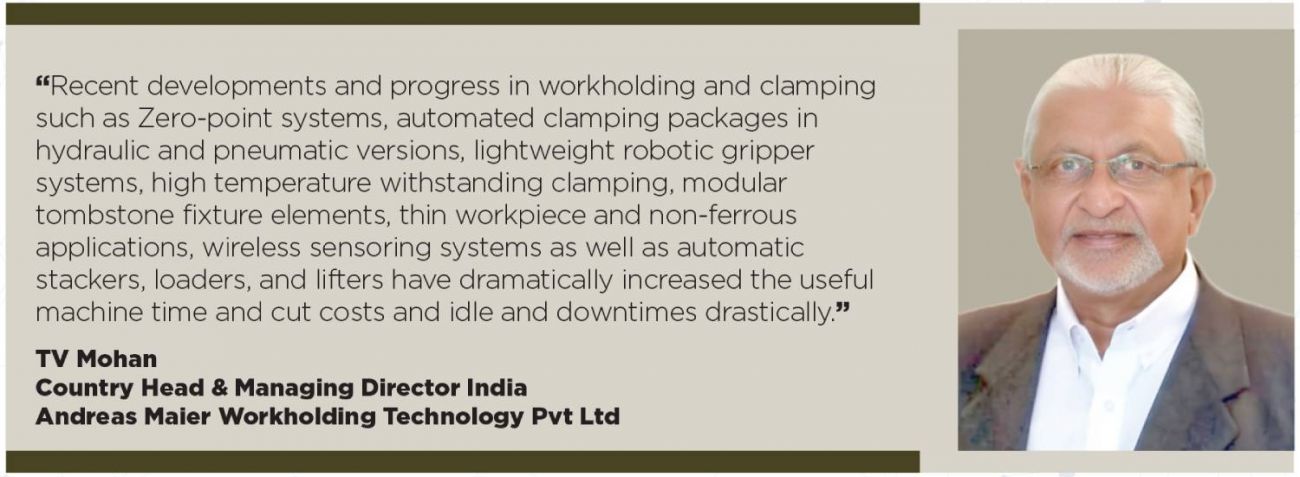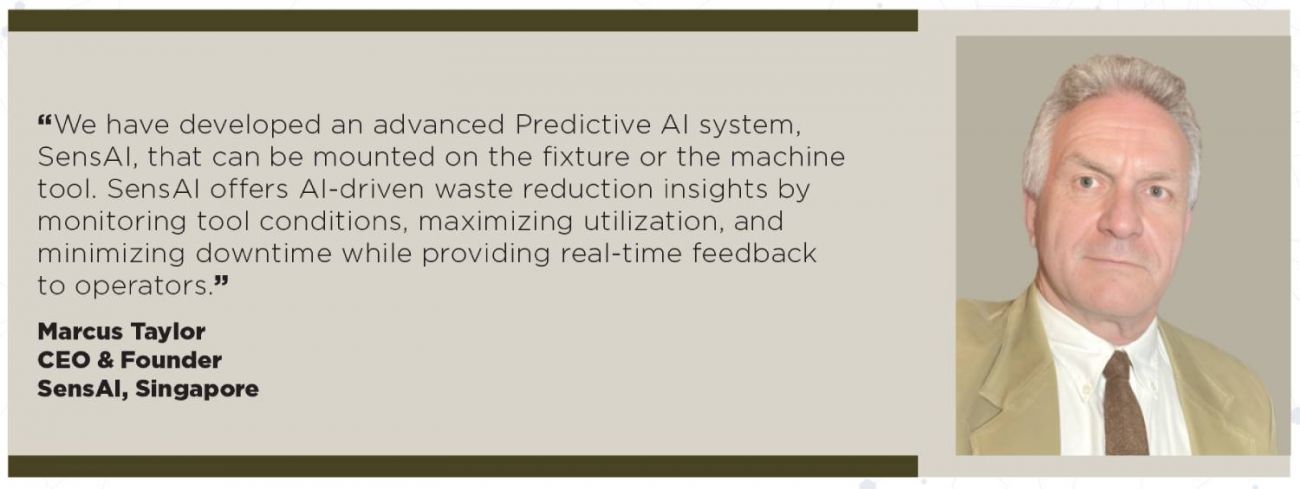Hydraulic Fixtures - The Unseen Hero of Manufacturing

Reji Varghese explores the evolving landscape of hydraulic machining center fixtures that work tirelessly behind the scenes to ensure precision, efficiency, and reliability. By embracing hydraulic fixtures, manufacturers can unlock new levels of efficiency, precision, and innovation.
The Manufacturing industry is undergoing a significant transformation, driven by rapid advancements in CNC machines and cutting tool technology. As machines become faster, more precise, and increasingly automated, the Working industry is being forced to adapt and innovate to keep pace. There are a number of challenges and opportunities facing the Workholding industry as it strives to meet the demands of modern manufacturing.
The rise of high-speed machining
The development of high-speed machining has revolutionized the Manufacturing industry. CNC machines can now operate at very high speeds, generating immense forces and vibrations that can compromise work-holding systems. The development of high-performance cutting tools, such as those with advanced coatings and geometries, has also enabled manufacturers to machine complex parts with increased precision and speed.
Traditional workholding methods, such as fixtures with mechanical clamps and vices, are struggling to keep up with these demands. Hence, to address this challenge, fixture builders are developing new products and technologies that can withstand the rigors of high-speed machining.
E Thayananthan, Head of Design, Forms and Gears, an ASM subsidiary, says, “About 30 years ago, it was only a few OEMs that were using hydraulic fixtures but nowadays hydraulic clamping systems are becoming increasingly popular even amongst smaller companies, as they offer faster clamping and unclamping times, as well as improved holding forces and vibration dampening.”

Gajanan Dongade, AGM, Fixture and Automation Division, Mazak India, says, “Quite often companies make the mistake of buying state-of-the-art CNC machining centers and cutting tools and comprising on fixtures. They might think they are saving cost by compromising on fixtures, but they are in fact, paying a heavy price for it because the full capability of their machines and cutting tools cannot be leveraged because of drawbacks in the fixtures.”
“We, at Mazak India, have realized the important role fixtures play in unlocking the full potential of the machine and we are now designing and manufacturing fixtures at our Mazak India facility in Pune. Mazak India is now a fixture hub for Mazak globally and most of our clients in India and abroad have benefited from using our fixtures to reduce cycle time, increase quality and repeatability, and decrease operator dependence,” he adds.
TV Mohan, Country Head & Managing Director India, Andreas Maier Workholding Technology, a subsidiary of AMF, Germany, says, “Recent developments and progress in work holding and clamping such as Zero-point systems, automated clamping packages in hydraulic and pneumatic versions, lightweight robotic gripper systems, high temperature withstanding clamping, modular tombstone fixture elements, thin workpiece and non-ferrous applications, wireless sensing systems as well as automatic stackers, loaders, and lifters have dramatically increased the useful machine time and cut costs and idle and downtimes drastically.”
Benefits of hydraulic fixtures
Higher cutting parameters, and faster machining: Apart from reduced clamping time, hydraulic fixtures allow for much faster machining cycles. Power clamps offer added security as they are not only independent of operator intervention, but also offer consistent and high clamping forces. Holding forces can also be adjusted to suit the specific requirements of the component. Automatically adjusting work supports become rigid supports during machining and prevent deflection and vibration during the machining cycle. Dongade says, “The use of work supports enables higher cutting parameters to be used, translating into lower cycle times. Work supports can be introduced into unsupported and inaccessible areas which greatly improve the rigidity of the fixture during high-speed machining, markedly improving quality parameters too.”

Quicker and sequential clamping: Instead of taking several minutes to tighten and loosen clamps on a manual fixture, a machine operator can activate a hydraulic fixture from a single point in a matter of seconds. The increased clamping speed thereby reduces the non-productive time which is especially critical in single pallet machines. In hydraulic fixtures, clamping can be done sequentially to operate the clamps in a specific order. This feature is important in many clamping situations and eliminates the chance of deformed parts due to improper clamping.
Improved component quality: Another important benefit of hydraulic fixtures is improved part quality. Consistent and repeatable clamping force is the primary improvement here, unlike manually operated clamps which rely on the diligence and attentiveness of the worker. Thayananthan says, “Hydraulic fixtures provide controlled and precise clamping forces cycle after cycle, to improve overall quality and minimize rejections. For example, reduced clamping forces can be independently applied on fragile sections of the workpiece, dramatically improving component quality.”
Reduced operator dependence: Hydraulic fixtures eliminate the strenuous activity of manually clamping and unclamping by introducing consistent and controllable functioning of hydraulically actuated clamps.
From a single point, multiple clamps can be activated at the push of a button. Hydraulic fixtures also improve the safety and efficiency of machine operations. Setting the component on the fixture and proper clamping is independent of the operator.
Indexing using hydraulics
For fixed indexing applications, hydraulics can be used on fixtures to make the fixtures index to a high degree of accuracy so that multiple setups can be done with just one fixture and one component clamping cycle. In addition to costs saved on multiple fixtures, this can also result in significant cost savings on rotary tables, etc.
Interfacing with robotics/automation
As automation and robotics continue to evolve, the demand for advanced hydraulic fixtures will grow. Artificial Intelligence (AI), Machine Learning (ML), Industry 4.0, and the Internet of Things (IoT) will drive the development of more sophisticated hydraulic fixtures, integrating sensors, actuators, and AI.
By embracing hydraulic fixtures, manufacturers can unlock new levels of efficiency, precision, and innovation, positioning themselves for success in the rapidly changing world of automation and robotics.
The future of work holding
As the Manufacturing industry continues to evolve, the Workholding industry must adapt and innovate to keep pace. This will require the development of new products and technologies that can meet the demands of advanced CNC machines and cutting tool technology.
Mohan says, “In our modern world, a wide range of automation tools such as cobots, robots, AI, and IoT-enabled technologies have become commonplace and are the new normal in the advent of lean and smart factories and shop floors consistent with Industry 4.0 objectives and goals. To achieve this revolution, machine manufacturers are under a constant development mode towards creating value, reducing waste and downtime, and ensuring a sustainable production standard. This is not only the responsibility of the machine builder (as to a large extent they set the pace) but also the task of the work holding, clamping, and the tool manufacturer to bring the efficiencies of the entire eco-system to scale up productivity."
Some potential areas of development include:
Artificial Intelligence and Machine Learning: The world of manufacturing is undergoing a significant transformation, driven by the increasing adoption of AI. One area where AI is making a substantial impact is in workholding. Fixture-building companies are beginning to leverage the power of AI and ML by incorporating them into innovative workholding solutions. Thayananthan says, “At Forms and Gears, we have developed SmartFix 4.0, which is a precision workholding device with the ability to collect, transmit, and analyze data in a useful format. Sensors to monitor vibration, pressure, the sequence of clamping, component presence, etc are mounted on the fixture. While sensors to monitor oil levels, oil contamination, and temperature are mounted on the powerpack. The high volume of data collected from these sensors is continuously transmitted wirelessly to the cloud where it is parsed and analyzed using Data Analytics and AI tools and sent back to a custom-built dashboard of the end user to provide useful insights into the machining process.”

Marcus Taylor, CEO & Founder, of SensAI, Singapore, says “We have developed an advanced Predictive AI system, SensAI, that can be mounted on the fixture or the machine tool. Sensai offers AI-driven waste reduction insights by monitoring tool conditions, maximizing utilization, and minimizing downtime while providing real-time feedback to operators. Data security is ensured through an embedded crypto algorithm, maintaining data integrity and privacy. The system supports wireless connectivity via Wi-Fi and 4G/5G/6G networks, enabling seamless integration and uninterrupted data collection. It also tracks power consumption and carbon emissions, addressing legal requirements and creating revenue opportunities through sustainability metrics. Continuous improvement is achieved through machine learning capabilities, as the system adapts to its environment and refines algorithms to enhance waste reduction and sustainability strategies. Operators receive instant feedback through a comprehensive interface, including a display dashboard, a mobile app, and a haptic feedback system on a wrist-worn device, allowing for prompt reactions to changing tool conditions.”

AI is transforming the world of workholding, enabling manufacturers to improve productivity, quality, and safety. By embracing AI-powered workholding systems, manufacturers can stay competitive in today’s fast-paced industrial landscape.
Advanced materials: Many companies are beginning to use advanced materials such as composites and nanomaterials to create lighter, stronger, and more durable work holding products.
Additive manufacturing: Additive manufacturing techniques such as 3D printing are also being used to create complex workholding products with optimized geometries and structures.
The unseen heroes of manufacturing
Mohan says, “The world of metal cutting is going to be even more exciting with connected machines, the evolution of AI, ML, and Digital and Collaborative automation, leading to unmanned factories and another industrial revolution. Workholding and clamping system manufacturers will have to continue to adapt and innovate to keep pace with this fast-changing landscape.”
Hydraulic fixtures are the unseen heroes of manufacturing, working tirelessly behind the scenes to ensure precision, efficiency, and reliability. By embracing hydraulic fixtures, manufacturers can unlock new levels of efficiency, precision, and innovation, positioning themselves for success in the rapidly evolving world of manufacturing.
 |
Reji Varghese MD RV Forms & Gears fngreji@gmail.com |



 Facebook
Facebook.png) Twitter
Twitter Linkedin
Linkedin Subscribe
Subscribe